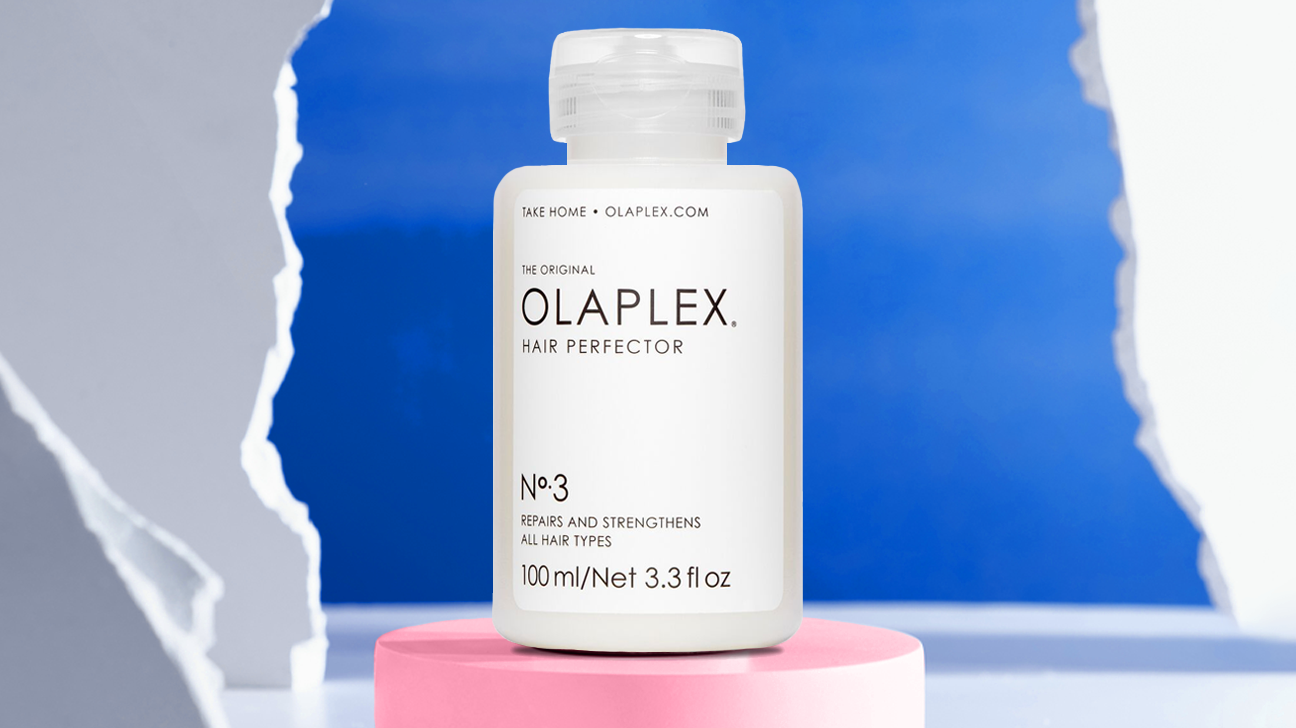
We all know her, we all love her — but should we now fear her?
We’re talking about Olaplex, the hair care company famous for creating a line of “bond-building” products that have amassed a loyal following since the company was founded in 2014.
This week, TikTokers did what do they do best and absolutely freaked out when the news hit that Olaplex’s formula contains an ingredient now banned by the European Union (EU) due to links with infertility.
TikTok has been swarming with videos of faithful fans tossing their Olaplex in the trash, and thousands of commenters are trying to figure out what exactly we’re supposed to believe. NGL, we panicked too — we’re BIG Olaplex fans.
So, should we be kissing our beloved Olaplex products goodbye? Here’s the deal.
What exactly is getting banned?
The company’s products — including the cult-fave No. 3 Hair Perfector — are known for strengthening and repairing damaged hair (and also leaving it soft AF) thanks to a patented ingredient called bis-aminopropyl diglycol dimaleate. Bis-aminopropyl diglycol dimaleate is *not* in the hot seat. (Even though there isn’t a ton of research on this ingredient ATM).
Instead, we’re looking at butylphenyl methylpropional (aka lilial), which is a fragrance added to cosmetic products for its floral scent. Lilial is a known allergen — it’s actually one of 26 fragrance ingredients in the EU that must be listed in the ingredient list instead of being lumped in as “Fragrance/Parfum.”
But all this talk isn’t about it being an allergen, it’s about the EU adding lilial to a list of banned substances after a 2019 report determined that it’s a reproductive toxin — aka potentially harmful to your baby-makin’ organs or, if you’re pregnant, your unborn baby.
The report found that the ingredient builds up in your system over time, which is problematic for products you use daily. It’s also a problem if you use multiple products that contain it.
Zinc pyrithione — the active ingredient in Head and Shoulders shampoos — is getting the boot for the same reason. So as of March 1st, products that contain either ingredient have to be off the shelves.
(Psst: This rule doesn’t apply to products in the U.S. because the FDA doesn’t have the same regulations as the EU. In fact, the FDA doesn’t currently make companies include the specific names of fragrances on their ingredient lists because fragrances are considered “trade secrets,” so avoiding specific fragrances can be a little tough.)
Sooo, can I still use Olaplex?
Olaplex is playing strong defense, saying they’ve already removed the ingredient ahead of the EU ban. And if you look at the brand’s website, butylphenyl methylpropional is no longer on the ingredient list (though fragrance/parfum is).
The good news? Butylphenyl methylpropional isn’t considered an active ingredient, so it doesn’t have anything to do with what makes Olaplex so amazing.
But it’s still a little unclear if the ingredient will still remain in products sold in the U.S. — temporarily or for the long term. We reached out to Olaplex for comment, but haven’t heard back from them on the question.
In the meantime, it’s your call if you want to continue using your beloved Olaplex products — especially as we wait for more info on any formulation changes in the U.S. And you might want to consider trying a new anti-dandruff shampoo.
And, as always when trying a new product, it’s a good idea to do a patch test before a full application.


0 Commentaires